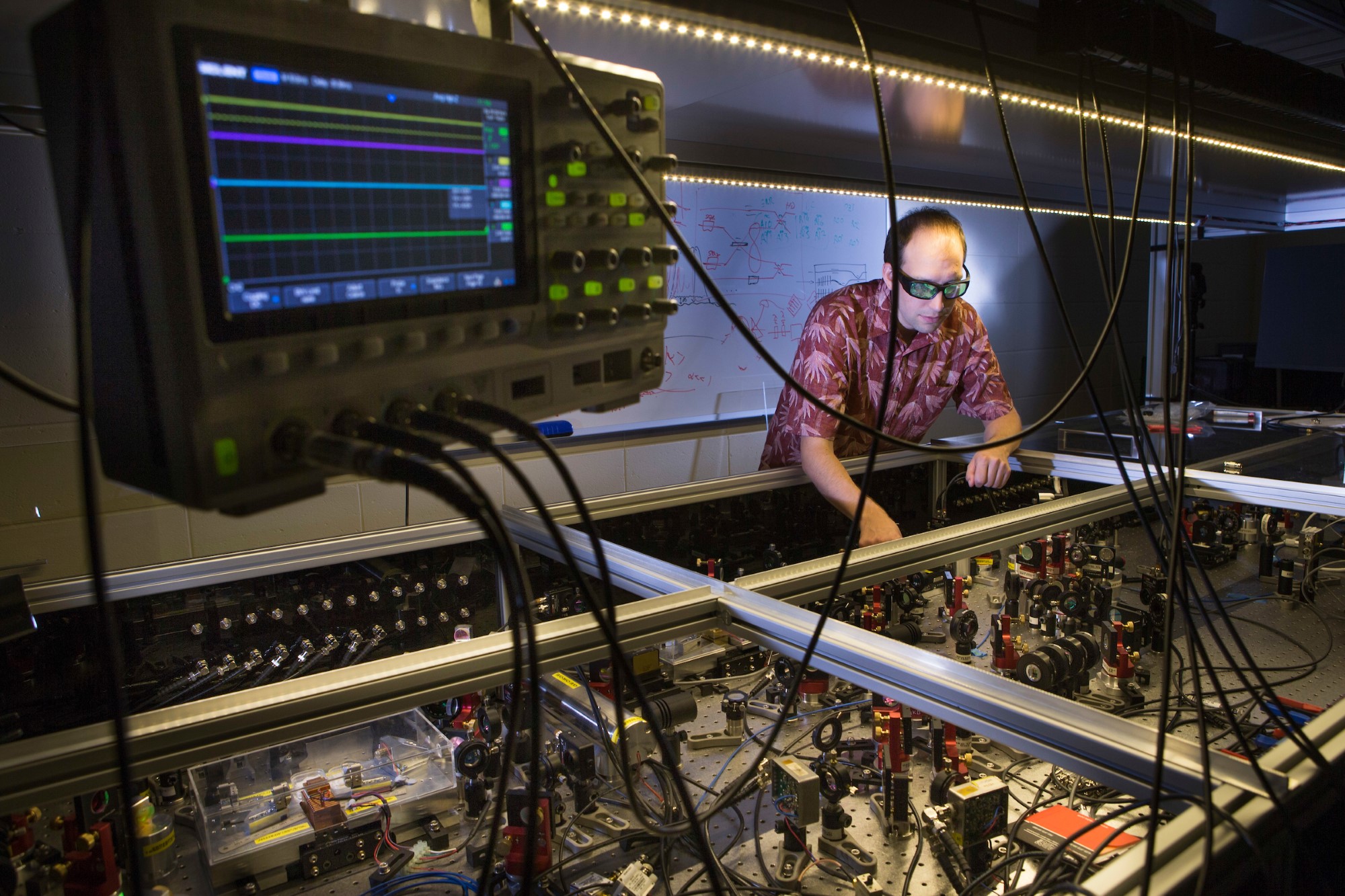
Research projects
Discover the forefront of astronomy and astrophysics through our projects, ranging from deep-space communication systems to groundbreaking adaptive optics. Explore our diverse, ongoing research initiatives shaping the future of space science.
Displaying 1 - 15 of 19 project(s).
This project will use observations of star clusters with the Hubble Space Telescope to disentangle the multi scale nature of star formation in local spiral galaxies.
Theme
- Stellar and planetary astronomy
Student intake
Open for Honours students
Observatory
People
- Dr Kathryn Grasha, Supervisor
- Professor Mark Krumholz, Supervisor
This project will use observations of star clusters with the Hubble Space Telescope to disentangle the multi scale nature of star formation in local spiral galaxies.
Theme
- Stellar and planetary astronomy
Student intake
Open for Honours students
Observatory
People
- Dr Kathryn Grasha, Supervisor
- Professor Mark Krumholz, Supervisor
A new search for strong gravitational lenses in the MAGPI survey
Theme
- Structure and evolution of the Cosmos
In this project we will use data-driven methods to obtain a large abundance census of dwarf galaxies using low-quality data previously not tapped into, to learn how galaxy properties connect to abundance distributions.
Student intake
Open for PhD students
People
- Dr Claudia Reyes, Supervisor
- Professor Melissa Ness, Supervisor
In this project we will use data-driven methods to obtain a large abundance census of dwarf galaxies using low-quality data previously not tapped into, to learn how galaxy properties connect to abundance distributions.
Student intake
Open for PhD students
People
- Dr Claudia Reyes, Supervisor
- Professor Melissa Ness, Supervisor
The Gaia mission has revolutionised our understanding of the Milky Way halo, but the biggest discoveries, which rely on individual abundances, are yet to be made.
Student intake
Open for PhD students
Observatory
People
- Dr Claudia Reyes, Supervisor
- Professor Melissa Ness, Supervisor
The Gaia mission has revolutionised our understanding of the Milky Way halo, but the biggest discoveries, which rely on individual abundances, are yet to be made.
Student intake
Open for PhD students
Observatory
People
- Dr Claudia Reyes, Supervisor
- Professor Melissa Ness, Supervisor
The kinematics and morphology of typically massive disk galaxies has changed dramatically over the last ~9 Gyrs.
Theme
- Structure and evolution of the Cosmos
Student intake
Open for Honours, PhD students
Observatory
People
- Associate Professor Emily Wisnioski, Supervisor
This project will deliver a benchmark sample of stellar abundances for galactic archaeology for hundreds of thousands of stars.
Student intake
Open for PhD students
Observatory
People
- Dr Claudia Reyes, Supervisor
- Professor Melissa Ness, Supervisor
This project will deliver a benchmark sample of stellar abundances for galactic archaeology for hundreds of thousands of stars.
Student intake
Open for PhD students
Observatory
People
- Dr Claudia Reyes, Supervisor
- Professor Melissa Ness, Supervisor
This research project employs the WiFeS spectrograph on the ANU 2.3m telescope at Siding Spring to measure nebular chemical abundances in isolated gas-rich dwarf galaxies in the Local Volume.
Theme
- Structure and evolution of the Cosmos
This research project employs the WiFeS spectrograph on the ANU 2.3m telescope at Siding Spring to measure nebular chemical abundances in isolated gas-rich dwarf galaxies in the Local Volume.
Theme
- Structure and evolution of the Cosmos
Modelling the oscillations of Red Clump stars using stellar evolution codes to study their internal structure.
Theme
- Galactic archaeology
Student intake
Open for Honours, Master students
Observatory
People
- Dr Claudia Reyes, Supervisor
- Professor Melissa Ness, Supervisor
Modelling the oscillations of Red Clump stars using stellar evolution codes to study their internal structure.
Theme
- Galactic archaeology
Student intake
Open for Honours, Master students
Observatory
People
- Dr Claudia Reyes, Supervisor
- Professor Melissa Ness, Supervisor
We have recently demonstrated a novel technique to recover sub-dwarf M stars from the combination of VISTA infra-red and SkyMapper photometry.
Theme
- Galactic archaeology
